- Home
- Margaret Atwood
In Other Worlds Page 2
In Other Worlds Read online
Page 2
But surely all draw from the same deep well: those imagined other worlds located somewhere apart from our everyday one: in another time, in another dimension, through a doorway into the spirit world, or on the other side of the threshold that divides the known from the unknown. Science Fiction, Speculative Fiction, Sword and Sorcery Fantasy, and Slipstream Fiction: all of them might be placed under the same large “wonder tale” umbrella.
This book is arranged in three parts. The first part, “In Other Worlds,” is a personal history of sorts. Its three chapters have as their genesis the Ellman Lectures I delivered at Emory University in Atlanta, Georgia, in the fall of 2010. The first chapter, “Flying Rabbits,” explores my involvement with SF and superheroes as a child, with some thoughts on the deep origins of such superhero features as body-hugging outfits, otherworldly origins, double identities, and flying. The second chapter, “Burning Bushes,” is concerned with my undergraduate interest in ancient mythologies, which both pre-date and inform SF. It then goes on to speculate on the differences between realistic fictions and the other kinds, and on the positive and negative capabilities of each.
The third chapter, “Dire Cartographies,” is partly about my unfinished Ph.D. thesis, which was about a number of nineteenth- and early twentieth-century fictions I collected together under the label “The Metaphysical Romance.” What intrigued me about the books I was studying were the supernatural female figures in them, the realms these inhabited, and the Wordsworthian/Darwinian split in the visions of nature they represented. These explorations led me to utopias and dystopias, of which the Victorian non-realists and those who continued to write in their traditions were very fond. “Dire Cartographies” is thus also about the three novels I myself have so far written that might be viewed as a continuation of these literary traditions.
The second part, “Other Deliberations,” gathers together some of my many pieces of writing about specific works of SF over the years. Some are reviews, some are introductions, others were originally radio talks. Why did I choose these particular works of SF to write about? you may wonder. But I didn’t choose them, exactly: in each case, someone else asked me to write about them, and I was unable to resist.
The third part, “Five Tributes,” is a group of my own mini-SF pieces. These were selected from among the many such that I have written over the decades, and each draws on recognizable memes from the genre. Four are self-contained miniatures, but the last one—“The Peach Women of Aa’A”—is from my novel The Blind Assassin, one of whose main characters is a writer of pulp-magazine science fiction during the early years of what is referred to as the golden age.
So that is what this book is about. It’s about my somewhat tangled personal history with SF, first as a child, then as an adolescent, then as a one-time student and academic, then as a reviewer and commentator, and then, finally, as a composer.
But where does all of this come from—the reading, the writing, the engagement, and especially the wilder storms on the wilder seas of invention? Everyone wants to know this about writers: What is your inspiration, what put you up to it? They’re never satisfied with such explanations as “Because it was there” or “I don’t know what came over me.” They want specifics.
So let me try this:
As a young child, living briefly in the winter of 1944–5 in an old house in Sault Ste. Marie, I used to get up before anyone else was awake and climb to the cold but spacious attic, where in a state of solipsistic bliss I would build strange habitations and quasi-people with a bunch of sticks and spools called Tinkertoy. What I really wanted to make was the windmill pictured on the box, but my set didn’t have the necessary parts, and as it was wartime I was unlikely ever to possess the missing items.
Some say that the art one makes as an adult supplies the absence of things longed for in childhood. I don’t know whether or not this is true. If I’d been able to create that windmill, would I have become a writer? Would I have become a writer of SF? We’ll never know the answer to that question, but it’s one theory.
Meanwhile—in gravely altered form—here is the windmill. I hope you have as much fun with it as I have had.
NOTES
1. The quotation by Octavia Butler appears in the About the Author note at the back of her novel Parable of the Sower.
2. Dick and Jane was a school reader series of the 1940s.
3. The New Scientist article appeared in the November 18, 2008, issue, under the general heading “The future of a genre.”
4. “The Wall” is the Berlin Wall.
5. The Lizard Men of Xenor appear in my novel The Blind Assassin, in the chapter of that name.
6. Ursula K. Le Guin’s review appears in the Guardian, August 29, 2009.
7. The public discussion with Ursula Le Guin took place in Portland, Oregon, on September 23, 2010, as part of the Portland Arts and Lectures series.
8. Bruce Sterling’s essay “Slipstream” was originally published in SF Eye #5, July 1989.
9. Des Knaben Wunderhorn was a collection of German folkloric material published between 1805 and 1808.
10. Tinkertoy was a pre-Lego assembly set.
Paper puppets by Margaret Atwood:
Animals of Neptune by Harold L. Atwood:
Flying Rabbits:
Denizens
of Distant Spaces
The child was already in the air, buoyed on his wings, which he did not flap to and fro as a bird does, but which were elevated over his head, and seemed to bear him steadily aloft without effort of his own.
EDWARD BULWER-LYTTON, The Coming Race
I have spoken of the shaman and the folktale hero, of privation that is transformed into lightness and makes possible a flight into a realm where every need is magically fulfilled.
ITALO CALVINO, “Lightness,” Six Memos for the New Millennium
That which we do not bring to consciousness appears in our lives as fate.
C. G. JUNG
Flying Rabbits (in balloons) by Margaret Atwood:
I entered the sort of modern wonder-tale world we might generally label SF at an early age. I grew up largely in the north woods of Canada, where our family spent the springs, summers, and falls. My access to cultural institutions and artifacts was limited: not only were there no electrical appliances, furnaces, flush toilets, schools, or grocery stores, there was no TV, no radio shows available except for those on short-wave Russian stations, no movies, no theatre, and no libraries. But there were a lot of books. These ranged from scientific textbooks to detective novels, with everything in between. I was never told I couldn’t read any of them, however unsuitable some of them may have been.
I learned to read early so I could read the comic strips because nobody else would take the time to read them out loud to me. The newspaper comics pages were called, then, the funny papers, although a lot of the strips were not funny but highly dramatic, like Terry and the Pirates, which featured a femme fatale called “The Dragon Lady” who used an amazingly long cigarette holder, or oddly surreal, like Little Orphan Annie—where were her eyes? The funny papers raised many questions in my young mind, some of which remain unanswered to this day. What exactly happened when Mandrake the Magician “gestured hypnotically”? Why did the Princess Snowflower character go around with a cauliflower on either ear? And if those weren’t cauliflowers, what were they?
In addition to being a comics reader, I was an early writer, and I drew a lot: drawing and reading were the main recreations available in the woods, especially when it was raining. Very little of what I wrote or drew was in any way naturalistic, and in this I suspect I was like other children. Those under the age of eight gravitate more easily toward talking animals, dinosaurs, giants, flying humanoids of one kind or another—whether fairies, angels, or aliens—than they do to, say, portrayals of cozy domestic interiors or bucolic landscapes. “Draw a flower” was what we used to be taught in school, and by that was meant a tulip or a daffodil. But the kinds of flowers we really liked t
o draw had more in common with Venus flytraps, only a lot bigger, and with half-digested arms and legs sticking out of them.
I revisited my early non-naturalistic tendencies during a recent trip I took through my own juvenilia, or what survives of it. When I say “juvenilia,” I’m not talking about the precocious teenage poems of William Blake or John Keats, but about things I was doing in the mid-1940s when I was six or seven. They centred around my superheroes, who were flying rabbits. Their names were Blue Bunny and White Bunny, and they were modelled upon two unimaginatively named real-life stuffed animals who did indeed go flying through the air, propelled by an age-old technology called “throwing.” But it wasn’t long before these feeble heroes morphed into two tougher creatures called Steel Bunny and Dotty Bunny, who flew in a more conventional superhero way, by means of capes. Steel’s cape had bars on it, Dotty’s had dots. So far, so clear.
My superhero rabbits were pale imitations of my older brother’s more richly endowed creations. It was he who invented flying rabbits—extraterrestrial flying rabbits. His were equipped with vehicles and advanced technologies—spaceships, airplanes, weaponry, the lot—and did battle not only with their hereditary enemies, the evil foxes, but with robots and man-eating plants and lethal animals. The planet where my brother’s rabbits lived was called Bunnyland; mine inhabited a more mysterious place called Mischiefland. Now what impelled me to name it that?
The rabbits in Mischiefland led a disorganized existence. They floated around by means of balloons—unavailable during the Second World War and thus of great fascination to me. Also I had by this time read The Wonderful Wizard of Oz, in which the wizard goes soaring away in a basket lifted by an enormous hot-air balloon. I allowed not only my rabbits but their pet cats to be levitated in this way. (I was not permitted to have a cat, and longed for one, so my rabbits had a lot of them.) The rabbits ate nothing but ice-cream cones, rare and desirable during wartime and the several lean years that followed. And they did tricks: specifically, a lot of twirling in the air, with the aid of their flying capes. They were only fitfully interested in shooting guns, pursuing criminals, saving the world, and so forth, though they did eject the occasional bullet from the occasional handgun, smiling eerily while doing it. But mostly, it seems, they just wanted to have fun and fool people.
Where did we kids discover the knowledge of flying capes, superpowers, other planets, and the like? In part, through the primitive comic-strip superheroes of the times, the most popular of which were Flash Gordon, for space travel and robots; Superman and Captain Marvel, for extra strength, superpowers, and cape-based flying; and Batman, who was a mortal, with a non-functional cape—one that must have encumbered him somewhat as he clawed his way up the sides of buildings—but who nonetheless shared with Captain Marvel and Superman a weak or fatuous second identity that acted as a disguise. (Captain Marvel was Billy Batson, the crippled newsboy; Superman was Clark Kent, the bespectacled reporter; Batman was Bruce Wayne, the very rich playboy who lounged around in a smoking jacket.)
Those—crossed with The Wonderful Wizard of Oz, a dollop of Greek mythology, and our one small book on the solar system—were probably the sources of our core ideas. The solar-system book was sedate in and of itself, but I should point out that at that time the planets were still relatively unknown, and thus still open for population by extraterrestrial life, which in our case leaned heavily toward hostile humanoid aliens with one eye and three-fingered hands, animals with razor-sharp teeth and nasty lurking and disembowelling habits, fish that could shoot electric rays at you or gas you to death, and plant life equipped with poisonous prickles or bulbs, or whiplike tentacles and rapid digestive systems. As our father was an entomologist and all-round naturalist, we also had ample access to scientific drawings of, for instance, pond life under the microscope, which may have contributed to our ideas of what Martians and Venusians and Neptunians and Saturnians should look like.
As for disguises, I note that our rabbits seldom felt the need for them: being short and young, we were our own Billy Batsons, and I assume that projecting your child ego onto a flying rabbit was enough of a dédoublement for us.
But where did the creators of the superheroes in the funny papers get their own ideas? I now find myself wondering. Ex nihilo nihil fit: from what ur-stock did these early superheroes descend? Evidently there were some key gene pools: Superman came from the Planet Krypton, so was clearly a child—in part—of the science fiction of the 1930s, which was filled with the letters K and Z and Y and X and Q—those oddities of the alphabet.
Captain Marvel’s magic word, SHAZAM, was composed of the initial letters of a number of classical gods and one non-classical figure—Solomon, Hercules, Atlas, Zeus, Achilles, and Mercury—so he descends to us, in part, through ancient mythology. Indeed, Captain Marvel’s mentor, the wizard Shazamo, once palled around with the enchantress Circe, she of the man-to-pig transformational powers in The Odyssey. I think the creators of the Big Red Cheese must have read the same books that I myself read as a child. (Wonder Woman also sports this line of descent, with her links to the goddess Diana the Huntress, she of the chastity and silver bow, the bowstring of which must have become—we just know it!—Wonder Woman’s potent lasso. In her early life—that is, in the comic books of the 1940s—Diana Prince, Wonder Woman’s alter ego, turns to jelly and loses power whenever kissed by her love object, Steve Trevor; virginity being an attribute of the original goddess.)
Batman, on the other hand, is born of technology alone. He is entirely human and therefore touchingly mortal, but he does have a lot of bat-machinery and bat-gizmos to help him in his fight against crime. The contemporary magazine most pertinent to him would thus not have been Weird Tales but Popular Mechanics. He is also—from the point of view of style and decor—the most futuristic of the superheroes: Gotham City, in its first iterations, was highly streamlined, with pronounced art deco influences.
Mythology, science fiction of the other-planetary kind, and modern technology: they all do fit together. At first glimpse, mythology might seem to be the odd one out, being ancient rather than ultra-modern; but as we have seen in the cases of Wonder Woman and Captain Marvel, this is very far from being the case.
In fact, all of the most salient features of these early comic-book heroes—and thus of my own flying rabbits, closely related to them except for the ears and tails—have deep roots in literary and cultural history, and possibly in the human psyche itself.
OTHER WORLDS
Where do other worlds and alien beings come from? Why do young children so routinely fear that there is something horrible under the bed, other than their slippers? Is the under-bed monster an archetype left over from prehistory, when we were hunted by cave tigers, or is it something else? Why do young children also believe that such inanimate objects as spoons and stones—let alone their stuffed teddy bears—have thoughts like theirs, and good and bad intentions toward them? Are these three questions related?
The ability to see things from the point of view of another being has been receiving a lot of attention from biologists lately, most notably Frans de Waal in his book The Age of Empathy. It used to be thought that only human beings could imagine life from the position of another, but not so, it seems. Elephants can, and chimpanzees, but not monkeys. Only a being with a sense of “self” can do this, it is supposed. One way of testing for this sense-of-self capacity is through mirrors. Does an animal looking at its reflection in a mirror recognize the reflection as itself? Intriguing experiments have been done in which elephants are presented with elephant-sized mirrors, having first had a visible mark painted on one side of the head and an invisible mark painted on the other side to exclude the sense of touch as a factor. If the elephant sees the mark on its reflected image and then touches the real mark on its head with its trunk, it must know that the reflection is “itself.” Often, before coming to the realization that the reflection is indeed itself, an elephant will look behind the mirror. So will a human child.
>
If you can image—or imagine—yourself, you can image—or imagine—a being not-yourself; and you can also imagine how such a being may see the world, a world that includes you. You can see yourself from outside. To the imagined being, you may look like a cherished loved one or a potential friend, or you may look like a tasty dinner or a bitter enemy. When a young child is imagining what’s under the bed, it is also imagining what it might represent to that unseen creature: usually prey. It is possibly not a good idea to tell the little ones that they look good enough to eat. Frisky the Cat wouldn’t be bothered by such a statement, lacking as she does a capacity for empathy, but Charlie the Child may well have hysterics.
One of the more brilliant innovations of H. G. Wells’s The War of the Worlds is that it so clearly sets forth what we puny human beings might look like to godlike intellects far superior to ours. From that time to this, we’ve been told many stories along these lines. Or, as Shakespeare put it, about gods thought of as somewhat closer to home than Mars: “As flies to wanton boys are we to th’ gods,/They kill us for their sport.”
Other worlds with strange inhabitants have been numerous in human mythologies and literatures. I’d speculate that, including all the fantasylands devised by children that never see publication, there are many more imaginary locations than there are real ones. Whether they are places we go after death—good or bad—or homes of the gods or supernaturals, or lost civilizations, or planets in a galaxy far, far away, they all have this in common: they aren’t here and now. They may be long ago or far away; they may be situated in that nebulous region, “the future”; they may even be given real estate in “another dimension” of the space-time we ourselves inhabit. The convention seems to be that other beings can pop into our living rooms from somewhere else, but they can’t drag along the entire other world from which they come. We, on the other hand, can slip through a cupboard or through a wormhole in space and find ourselves transported to their realm. Stories about encounters with other beings thus always involve travel, one way or another. Something or someone moves from “there” to “here,” or we ourselves move from “here” to “there.” Portals, gateways, waystations, and vehicles abound, as in—come to think of it—ancient myths, with their cave entrances and chariots of fire.

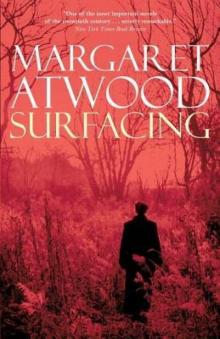 Surfacing
Surfacing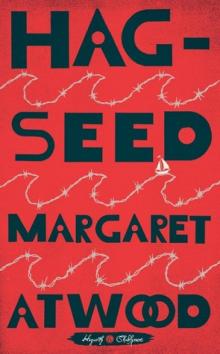 Hag-Seed
Hag-Seed Oryx and Crake
Oryx and Crake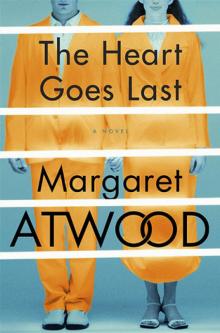 The Heart Goes Last
The Heart Goes Last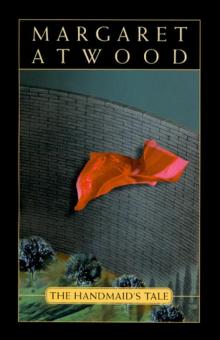 The Handmaid's Tale
The Handmaid's Tale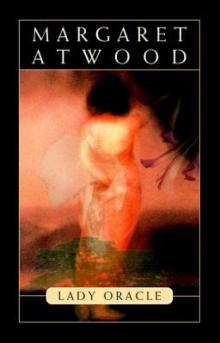 Lady Oracle
Lady Oracle Good Bones and Simple Murders
Good Bones and Simple Murders The Robber Bride
The Robber Bride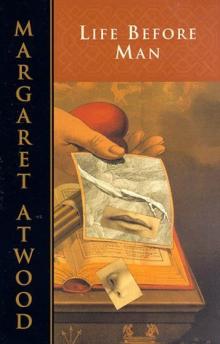 Life Before Man
Life Before Man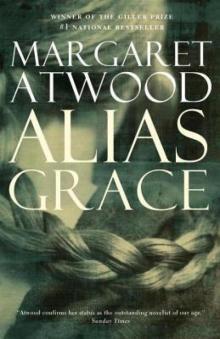 Alias Grace
Alias Grace The Blind Assassin
The Blind Assassin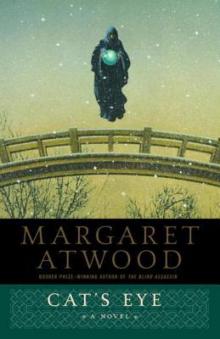 Cat's Eye
Cat's Eye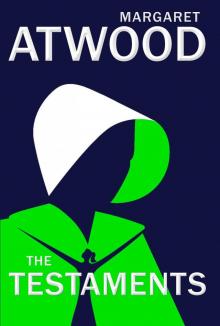 The Testaments
The Testaments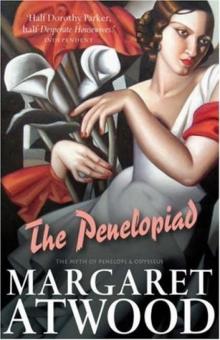 The Penelopiad
The Penelopiad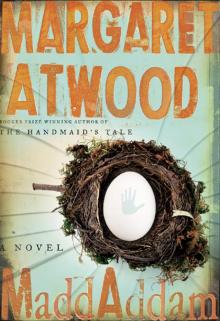 MaddAddam
MaddAddam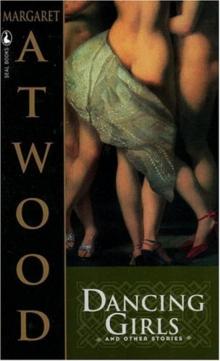 Dancing Girls & Other Stories
Dancing Girls & Other Stories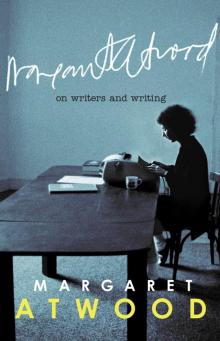 On Writers and Writing
On Writers and Writing Selected Poems II (1976-1986)
Selected Poems II (1976-1986)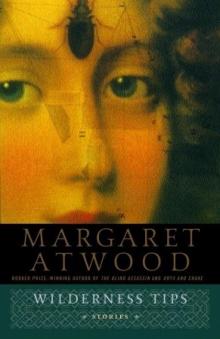 Wilderness Tips
Wilderness Tips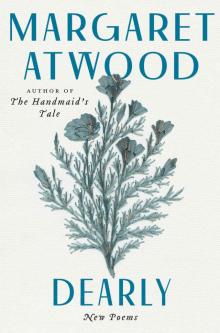 Dearly
Dearly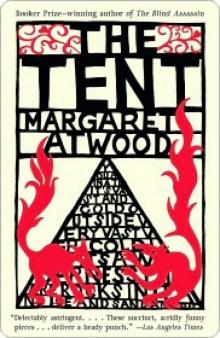 The Tent
The Tent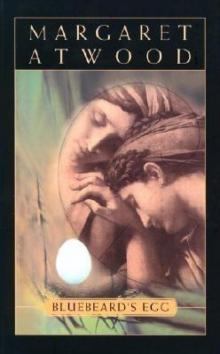 Bluebeard's Egg
Bluebeard's Egg The Edible Woman
The Edible Woman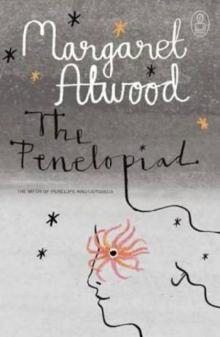 The Penelopiad: The Myth of Penelope and Odysseus
The Penelopiad: The Myth of Penelope and Odysseus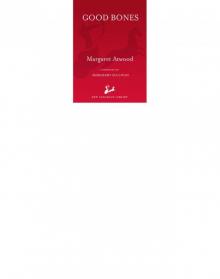 Good Bones
Good Bones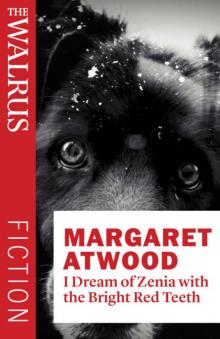 I Dream of Zenia with the Bright Red Teeth
I Dream of Zenia with the Bright Red Teeth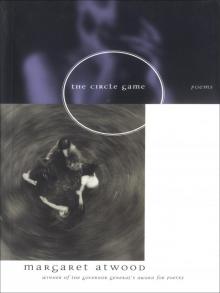 Circle Game
Circle Game Choke Collar: Positron, Episode Two
Choke Collar: Positron, Episode Two Stone Mattress: Nine Tales
Stone Mattress: Nine Tales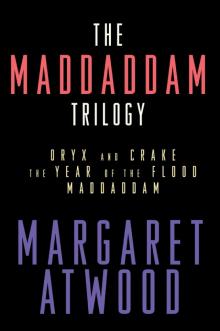 The MaddAddam Trilogy
The MaddAddam Trilogy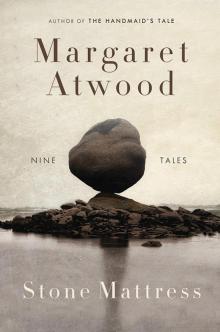 Stone Mattress
Stone Mattress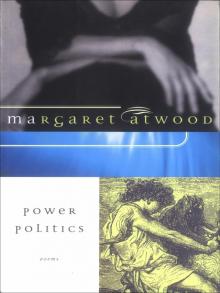 Power Politics
Power Politics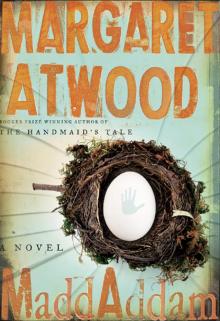 MaddAddam 03 - MaddAddam
MaddAddam 03 - MaddAddam I’m Starved for You (Kindle Single)
I’m Starved for You (Kindle Single) Murder in the Dark
Murder in the Dark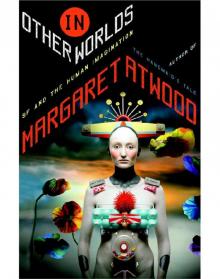 In Other Worlds
In Other Worlds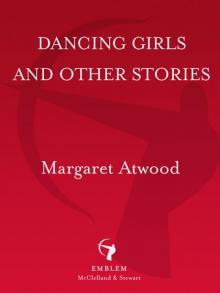 Dancing Girls
Dancing Girls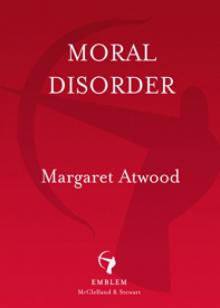 Moral Disorder
Moral Disorder